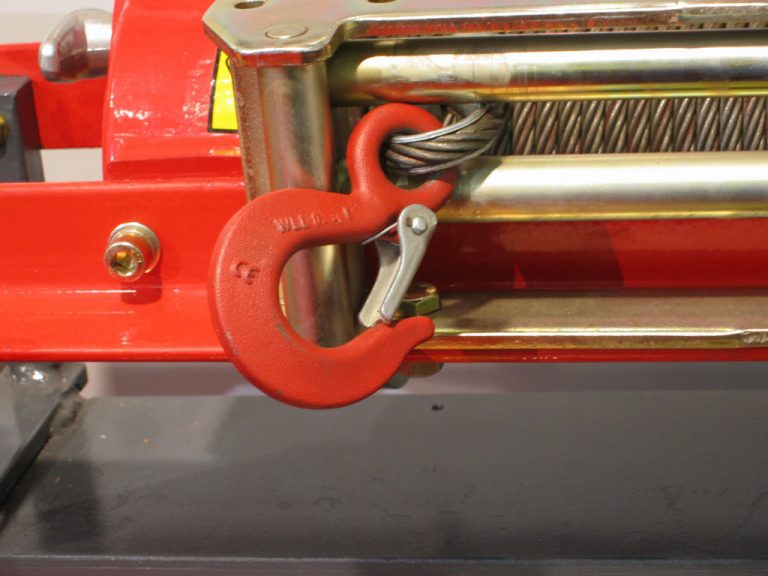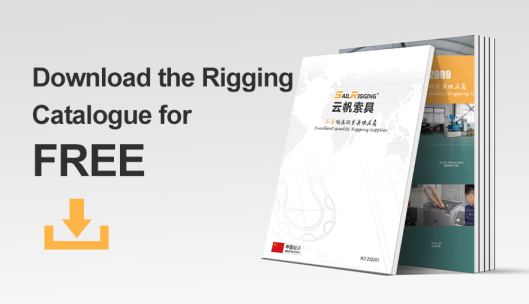The material used in the construction of lifting hooks is a critical factor in determining the hook’s strength, durability, and suitability for various applications. Lifting hooks are typically made from high-strength, durable materials to ensure the safety of lifting operations. The choice of material depends on the specific requirements of the application and environmental factors. Here are some common materials used for manufacturing lifting hooks:
1. Alloy Steel Lifting Hook:
Material Composition: Alloy steel lifting hooks are made from a combination of iron and various alloying elements, such as chromium, nickel, molybdenum, and vanadium. These alloys enhance the material’s mechanical properties.
Advantages:
High Strength: Alloy steel hooks are known for their high tensile strength, making them suitable for heavy-duty lifting operations.
Durability: They exhibit exceptional resistance to wear and deformation, ensuring a longer lifespan and reduced maintenance requirements.
Versatility: Alloy steel hooks are highly versatile and can withstand demanding applications.
Key Features:
Heat Treatment: Alloy steel hooks can be heat-treated to further improve their mechanical properties, including hardness and toughness.
Corrosion Resistance: While alloy steel is not as corrosion-resistant as stainless steel, it still offers reasonable protection against rust, especially when properly coated.
Typical Applications:
Construction: Alloy steel lifting hooks are commonly used in construction for lifting and securing heavy structural components like beams and concrete formwork.
Material Handling: They are employed in material handling equipment, including cranes, hoists, and forklifts.
Rigging: Alloy steel hooks are used in various rigging applications across industries for securing and lifting heavy loads.
2. Carbon Steel Lifting Hook:
Material Composition: Carbon steel lifting hooks are primarily composed of iron and carbon, with lower percentages of alloying elements compared to alloy steel.
Advantages:
Cost-Effective: Carbon steel hooks are generally more budget-friendly compared to alloy and stainless steel options, making them an economical choice for many applications.
Heat-Treatable: They can be heat-treated to enhance their mechanical properties, making them suitable for specific lifting tasks that require added strength.
Versatility: Carbon steel hooks find use in a broad range of lifting and rigging applications.
Key Features:
Heat Treatment: Carbon steel hooks can be heat-treated to increase hardness and tensile strength, making them suitable for demanding tasks.
Coating Options: To enhance corrosion resistance, carbon steel hooks can be coated with paint or galvanized.
Typical Applications:
General Lifting: Carbon steel lifting hooks are used for various lifting and rigging applications, including securing loads in warehouses and manufacturing facilities.
Industrial Equipment: They are employed in the construction of material handling and industrial equipment.
Agriculture: Carbon steel hooks are commonly used in agricultural settings for tasks like hoisting heavy equipment or securing loads.
3. Stainless Steel Lifting Hook:
Material Composition: Stainless steel lifting hooks are made from an iron-chromium alloy with varying amounts of nickel, molybdenum, and other elements to enhance corrosion resistance.
Advantages:
Corrosion Resistance: Stainless steel hooks are highly resistant to rust and corrosion, making them ideal for use in marine, outdoor, and corrosive environments.
Hygienic: They are commonly used in the food and pharmaceutical industries due to their non-reactive properties and ease of cleaning.
Aesthetics: Stainless steel hooks have an attractive appearance, making them suitable for architectural and decorative applications.
Key Features:
Passivation: Stainless steel hooks are often passivated to enhance their corrosion resistance by removing surface contaminants.
Polishability: Stainless steel can be polished to maintain its aesthetic appeal in architectural and decorative settings.
Typical Applications:
Marine and Offshore: Stainless steel lifting hooks are widely used in marine and offshore applications due to their resistance to saltwater corrosion.
Food Processing: They are essential for handling and processing food products where hygiene and cleanliness are paramount.
Outdoor and Architectural: Stainless steel hooks find use in architectural and outdoor applications, such as awnings, shade structures, and decorative installations.
Differences and Considerations:
Strength: Alloy steel hooks offer the highest tensile strength, followed by carbon steel and then stainless steel.
Corrosion Resistance: Stainless steel provides superior corrosion resistance, while alloy and carbon steel may require additional protective coatings in corrosive environments.
Cost: Carbon steel hooks are generally the most cost-effective, followed by alloy steel and stainless steel, which tends to be the most expensive.
Applications: The choice of material should consider the specific demands of the lifting operation, environmental conditions, and budget constraints.
Selecting the right lifting hook material is crucial to ensure the safety and efficiency of lifting operations. Careful consideration of the advantages, features, and application-specific requirements will guide you in making the appropriate choice. If you want to learn more about lifting hooks, you could contact Sail Rigging Now!





